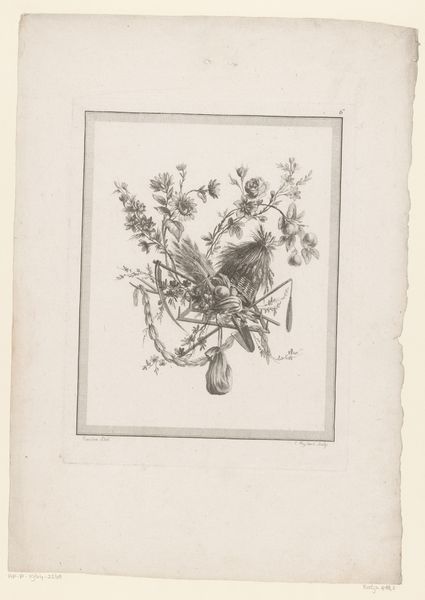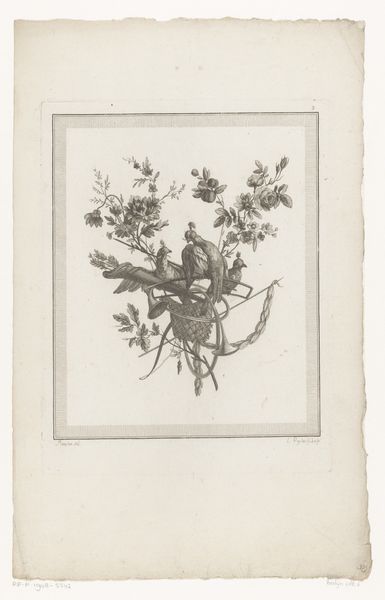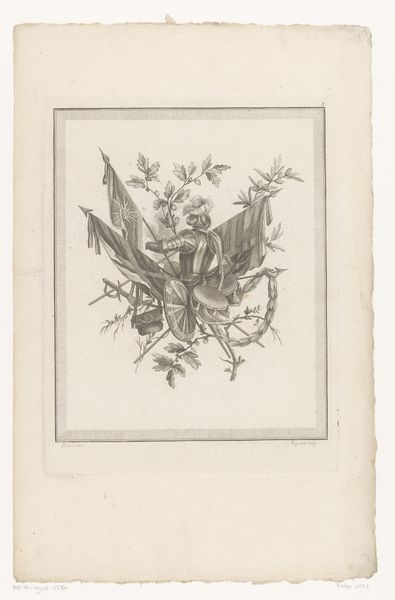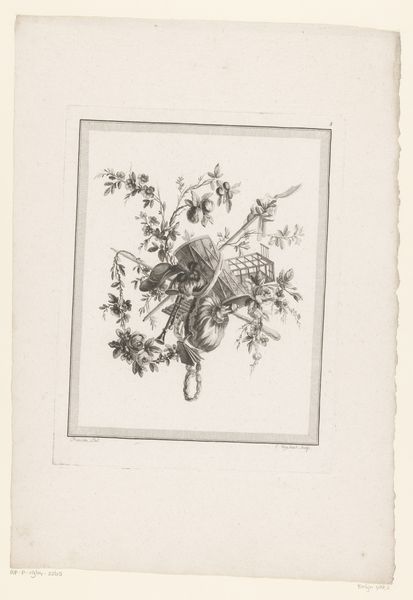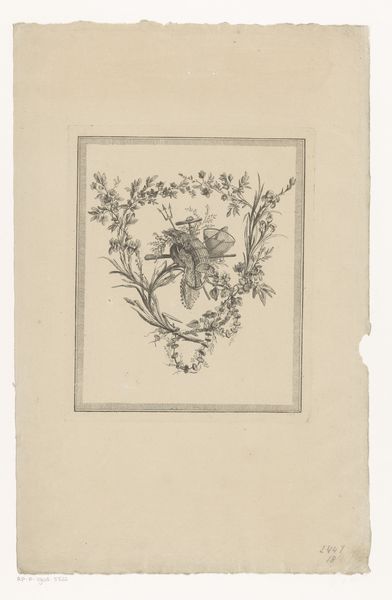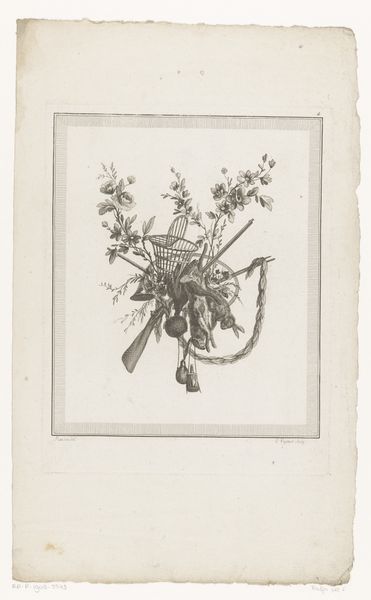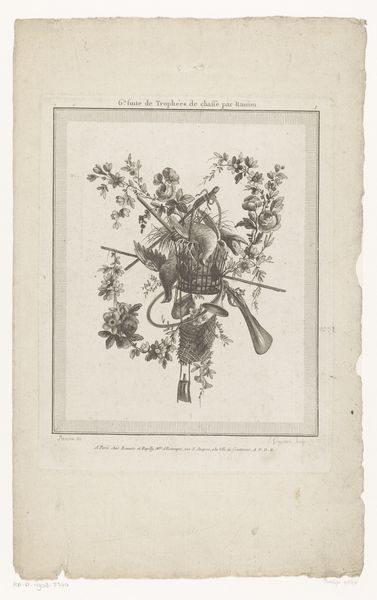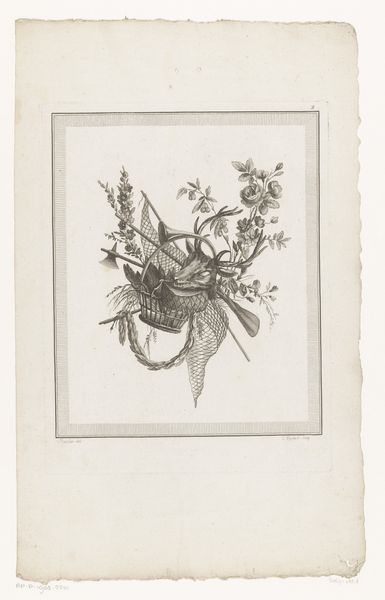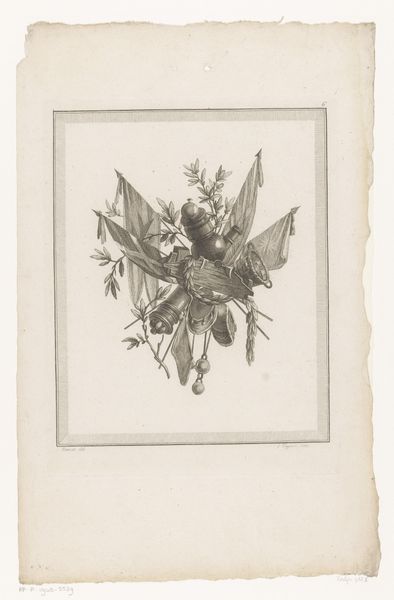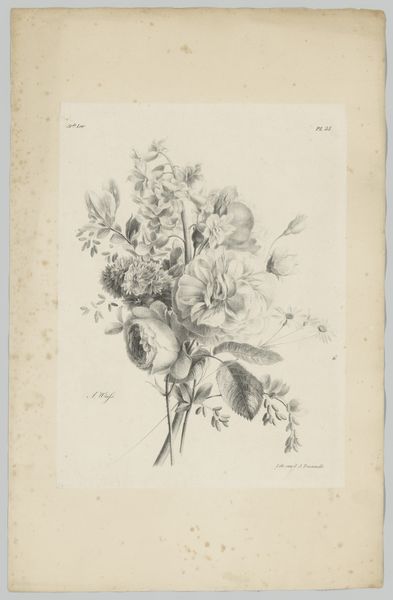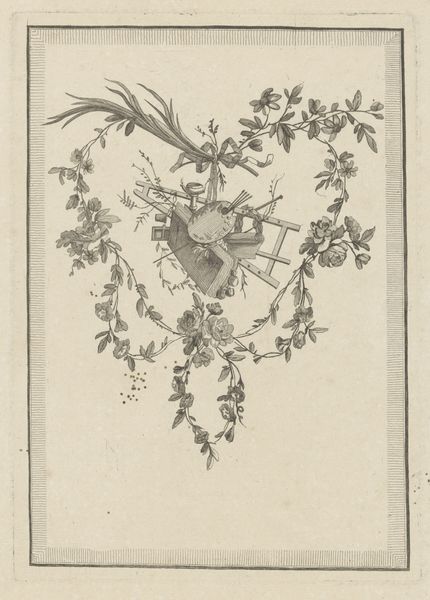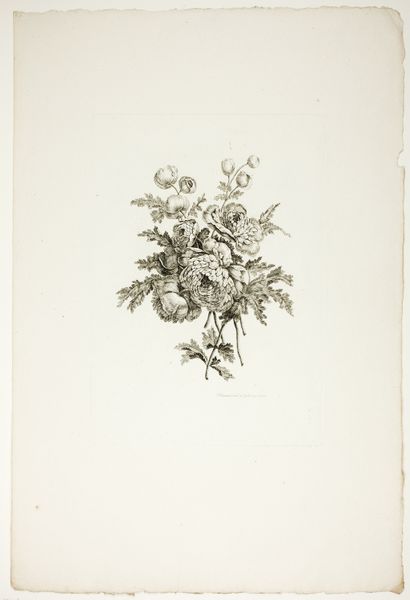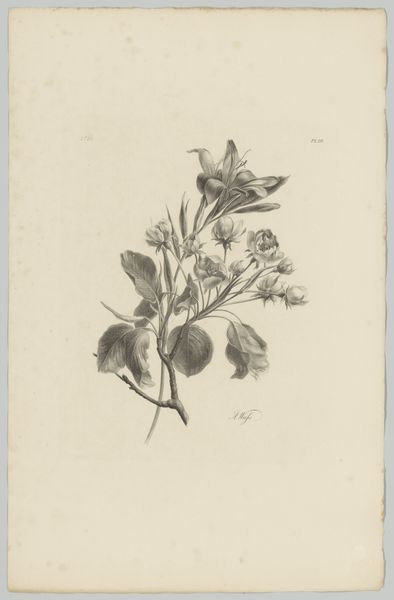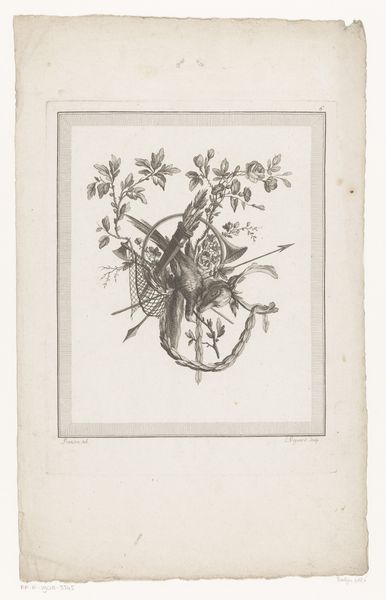
Dimensions: height 281 mm, width 220 mm
Copyright: Rijks Museum: Open Domain
Curator: Welcome. Here we have Etienne Claude Voysard's "Jachttrofee," an engraving from 1778 currently held in the Rijksmuseum. Editor: Striking, isn't it? The high contrast immediately draws you in, although it presents a rather grim juxtaposition of death and fragile, blossoming life. Curator: Indeed. Observe the careful arrangement of elements. The central fox head is framed by an elegant arrangement of foliage, hunting spears, and a net. The composition achieves balance through the symmetrical placement of the floral elements and the angular weapons. The formal containment afforded by the image’s simple frame gives it structural strength. Editor: And consider the process itself: engraving. The lines, etched by hand into a metal plate, then transferred to paper. Each print is an echo of labor. Note how the fox appears almost collaged within these trappings. The fruits and foliage rendered beside it contrast sharply, highlighting both nature’s bounty and humanity’s violent control. The whole enterprise speaks to both social ritual and practical necessities. Curator: Note how Voysard employs a classically Baroque sensibility here, albeit softened for a late 18th-century audience. There's a delicate dance between the organic and the geometric, nature and artifice, echoed by the medium itself: the artifice of the engraver bringing to life the forms of the natural world. Editor: Absolutely. And further, there's a commentary on the value system inherent in the practice of hunting, an exploration of who—or what—gets commodified, preserved, or discarded according to human design. What a statement about class and land ownership in that moment! Curator: Quite so. It is a sophisticated visual essay in monochrome. The image certainly delivers complex aesthetic pleasures, offering an intriguing interplay between tradition, symbolic weight, and the sheer artistry of line. Editor: It’s a beautiful and somewhat discomforting object, asking viewers to unpack our complex relationship with the natural world and modes of production. It invites consideration of both method and motivation within a specific social reality.
Comments
No comments
Be the first to comment and join the conversation on the ultimate creative platform.
